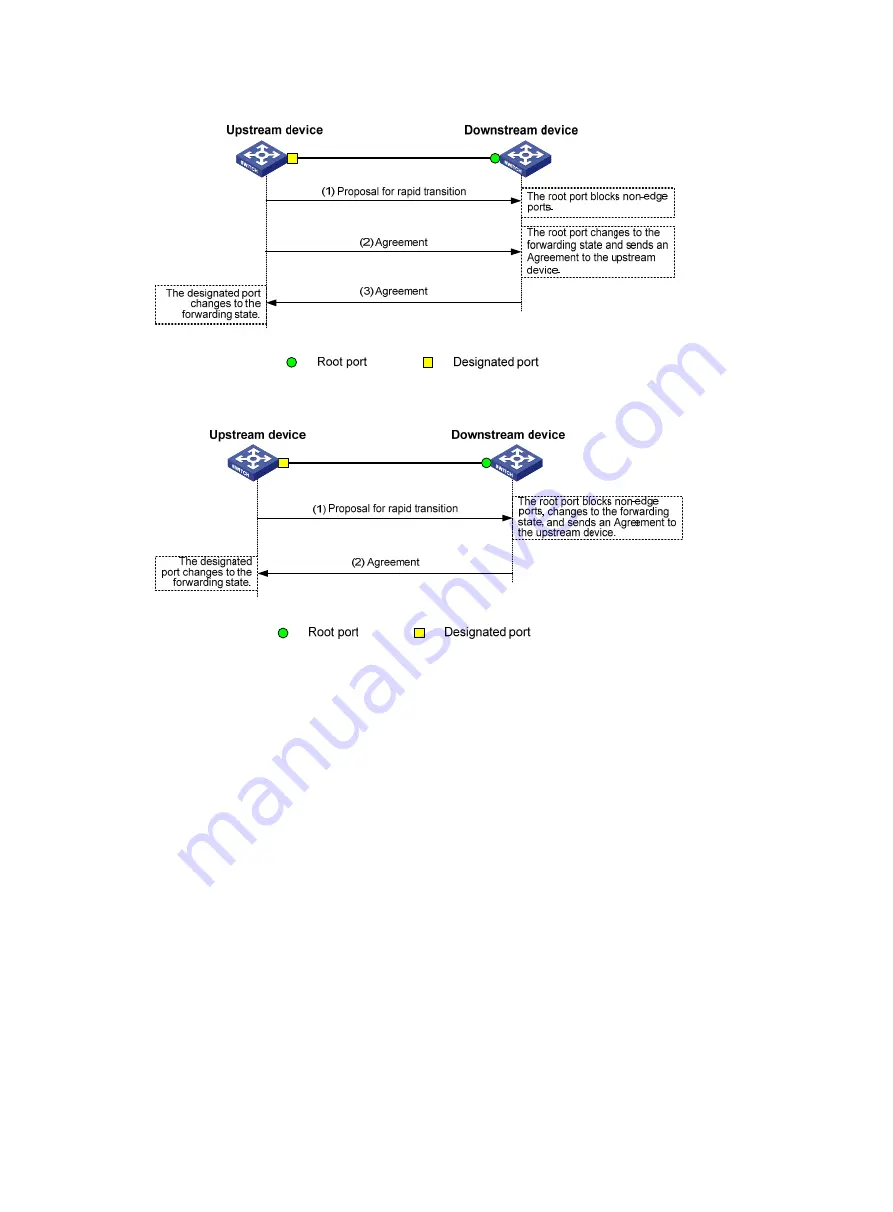
96
Figure 24 Rapid state transition of an MSTP designated port
Figure 25 Rapid state transition of an RSTP designated port
If the upstream device is a third-party device, the rapid state transition implementation might be
limited as follows:
•
The upstream device uses a rapid transition mechanism similar to that of RSTP.
•
The downstream device adopts MSTP and does not operate in RSTP mode.
In this case, the following occurs:
1.
The root port on the downstream device receives no agreement packet from the upstream
device.
2.
It sends no agreement packets to the upstream device.
As a result, the designated port of the upstream device can transit to the forwarding state only after a
period twice the Forward Delay.
You can enable the No Agreement Check feature on the downstream device's port to enable the
designated port of the upstream device to transit its state rapidly.
Configuration prerequisites
Before you configure the No Agreement Check function, complete the following tasks:
•
Connect a device to a third-party upstream device that supports spanning tree protocols
through a point-to-point link.
•
Configure the same region name, revision level, and VLAN-to-instance mappings on the two
devices.
















































